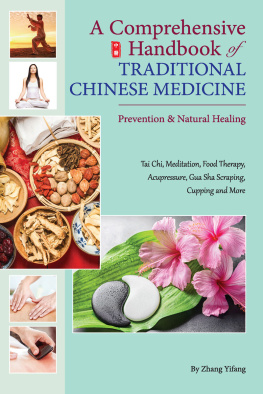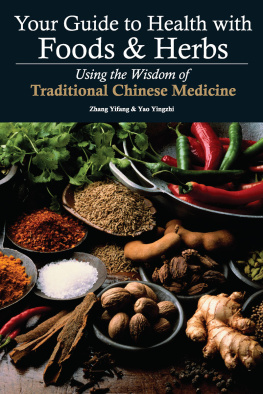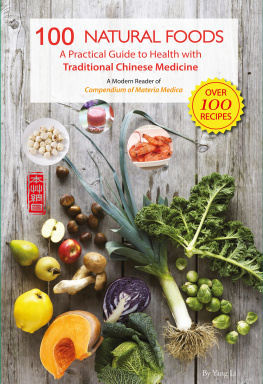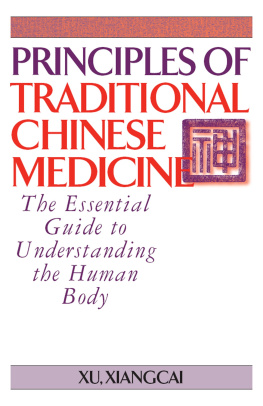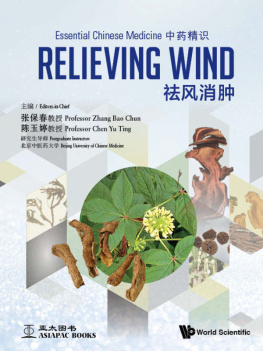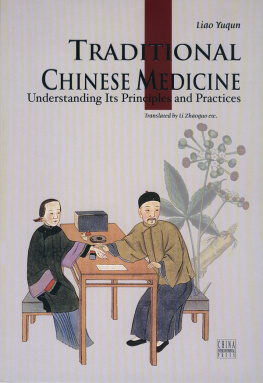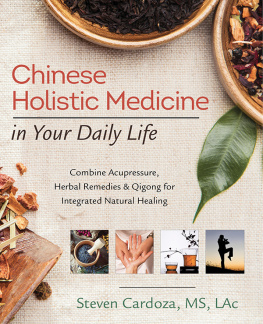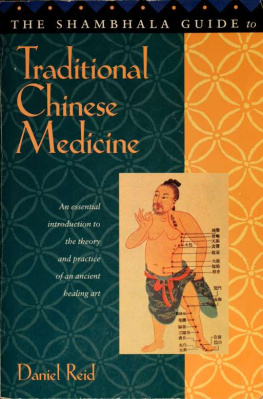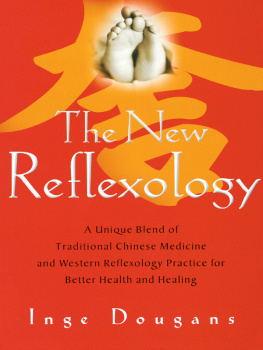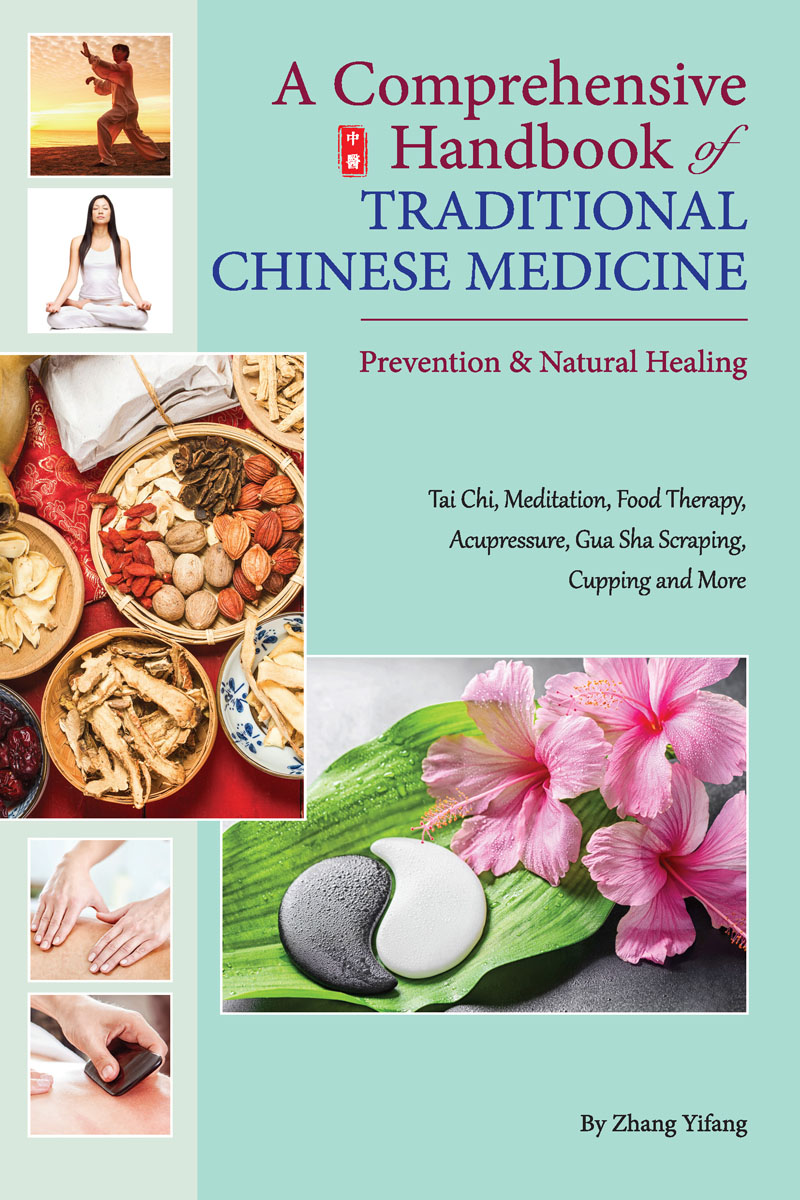
Copyright 2021 by Shanghai Press and Publishing Development Co., Ltd.
All rights reserved. Unauthorized reproduction, in any manner, is prohibited.
This book is edited and designed by the Editorial Committee of Cultural China series.
Text by Zhang Yifang
Tai Chi and Ba Duan Jin movement demonstration by Yu Chao
Photographs and computer graphics by Roger Yan, Wu Mengyue, Quanjing, PPBC, Getty Images
Menu design and photographs by Manuela Aldica
Cover and interior design by Wang Wei
Copy Editor: Shelly Bryant
Editor: Cao Yue
Editorial Director: Zhang Yicong
Senior Consultants: Sun Yong, Wu Ying, Yang Xinci
Managing Director and Publisher: Wang Youbu
ISBN: 978-1-60220-172-9
Address any comments about A Comprehensive Handbook of Traditional Chinese Medicine: Prevention & Natural Healing to:
Better Link Press
99 Park Ave
New York, NY 10016
USA
or
Shanghai Press and Publishing Development Co., Ltd.
F 7 Donghu Road, Shanghai, China (200031)
Email:
Printed in China by Shanghai Donnelley Printing Co., Ltd.
1 3 5 7 9 10 8 6 4 2
The material in this book is provided for informational purposes only and is not intended as medical advice. The information contained in this book should not be used to diagnose or treat any illness, disorder, disease or health problem. Always consult your physician or health care provider before beginning any treatment of any illness, disorder or injury. Use of this book, advice, and information contained in this book is at the sole choice and risk of the reader.
Contents
Part One
General Theory and Concepts: Decoding the Coded Message of Chinese Medicine
Part Two
TCM External Adjustment: The Mystery of Meridians and Acupoints

Part Three
TCM Internal Management: How Do Diet, Daily Lifestyle and Breath Control Affect Us

Introduction
We are what we read and think.
We are what we eat.
We are what we connect.
(Proverb)
We are what we read and think means the books we read enrich our experience and enhance our health awareness. Medical knowledge in the East and West is based on philosophical thinking, logical inference, and clinical examination. All medicine is the accumulation of human wisdom and experience. Understanding this body of knowledge will make one more objective, selective, and rational and will arm us with more solutions when we face health issues.
We are what we eat indicates that food shapes us. The diet we choose and the food we consume contribute to our unique body constitution. The healthy eating concepts and habits advocated in this book, combined with a wealth of anti-aging and preventive food and herbs, remedies, and recipes, will help us enjoy food while staying healthy.

The healthy eating concepts and habits will help us enjoy food while staying healthy.
We are what we connect means our internal and external biospheres decide our lifespan. The internal and external network of relationships unifies the inside and outside of the human body. The bodys internal network includes visible or invisible electric currents and magnetic conduction, the nervous system, the respiratory tract, the esophagus, the lymphatic vessels, the blood vessels, the interstitial fluid system, and other such systems. Two thousand five hundred years ago, TCM (Traditional Chinese Medicine) created and discovered the meridians and triple-energized system, a higher level of the bodys interconnected network, viewed from the perspective that human body is an organic whole. Our external social circle includes our family, friends, and neighbors. When we are not well, who cares about us and how many people care about us are relevant to our health. Research shows that the importance of interpersonal relationship to our longevity is far beyond imagination. Relationships may be more important than how much fruits and vegetables we eat and whether we exercise regularly and do regular physical checkups. A follow-up study of 268 men by Harvard Medical School found that what really matters in a persons life is his or her relationship with others. The study also found that people who spend a lot of time with friends and chatting tend to live longer than those who prefer to be alone.
Seeking wise, effective solutions to achieve daily happiness, high quality of life, and longevity has become increasingly popular among individuals and families internationally. Understanding the theory and concepts of TCM, applying acupuncture (or acupressure), and the use of natural foods and herbs, combined with Qigong exercises and other similar activities have become routinely practiced worldwide in over 180 countries and regions. TCM provides a systematic philosophy and choices for people to cope with high pressure from living, working, and studying and challenges from an unhealthy lifestyle, because TCM is based on a bulk of clinical practices, thousands years of development, and modern knowledge. Its logic is based on the foundation of harmony between environmental conditions, food, and the human spirit.
People are eager to find easy ways to maintain a positive attitude toward life, and seek a healthy diet, exercise, and so on. Among the solutions for achieving physical and spiritual health, daily health care and disease prevention are far more important than treatments after symptoms have occurred. Therefore, we should build up our sense of health consciousness, know our own and family members conditions, embrace those health care methods, choose suitable types or tools for health practice, and benefit ourselves in the long run.
The health management proposed by TCM is set on the basis of a return to nature. Focus shifts away from treatment and rehabilitation to a certain measure of mind-body or illnesss holistic adjustment, prevention, and maintenance. This is the principle applied in this book. When seeking health and well-being, we should look for help from the wisdom and methods classical, modern, Asian, and Western. As for individual health, one should achieve physical and mental harmony through maintaining the balance between heaven, earth, and humans.
I grew up in a family of TCM doctors and have been practicing TCM for nearly four decades. I have always followed the ideas of balance and harmony. I will share with you my accumulated experience and techniques in this book. A considerable part of the book is drawn from lectures I have delivered to various audiences at home and abroad, so the reader need not have a modern medical foundation or any knowledge about Chinese medicine. A variety of readers can find essential relevant knowledge and information from this book. In view of this goal, the style of writing is as close as possible to the readers, so that it is easy to learn, understand, and operate. Some who have TCM knowledge and those who want to use it as textbook for training can also find useful information in relevant chapters.
The wisdom of Chinese medicine is rooted in daily life and has been tested for thousands of years. Mindset is often emphasized first when we talk about our daily regimen. Psychological effects can be thought of as ones attitude toward overall wellness and total health maintenance, sometimes called the Health Quotient (HQ). According to this belief, whenever doctors of Chinese medicine see a conflict between the patients body, environment, certain foods, and/or climate, they do not immediately look for a prescriptive remedy. Instead, they first seek to discover the root of the conflict, then they take steps to avoid a continuation of this conflict. Finally, they use food therapy, acupuncture, and lifestyle change, among other treatments, especially natural remedies that aim to eliminate the conflict and balance the body. When people receive modern treatment, functional food, acupressure, Qigong exercise, and other treatments provide beneficial adjuvants to these treatments, bringing complementary benefits to these people.
Next page
